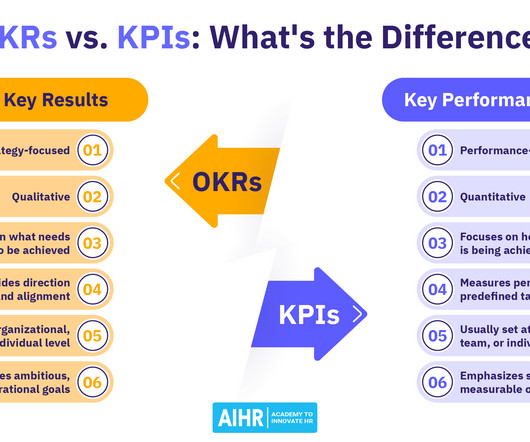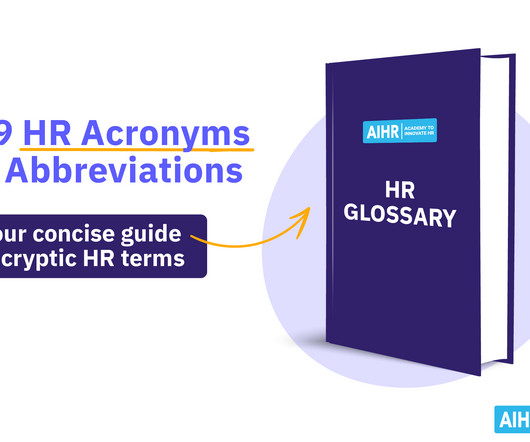OKRs vs. KPIs: The Key Differences & Use (With Examples)
Analytics in HR
MAY 13, 2024
More than 80% of companies agree that Objectives and Key Results (OKRs) positively impact their organizations. OKRs set ambitious goals, while Key Performance Indicators (KPIs) provide measurable metrics to track progress, creating a powerful framework for aligning strategy with execution.















Let's personalize your content